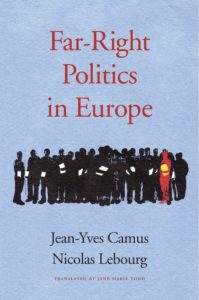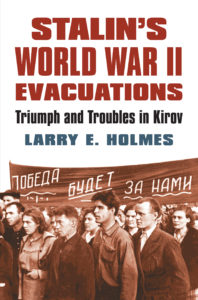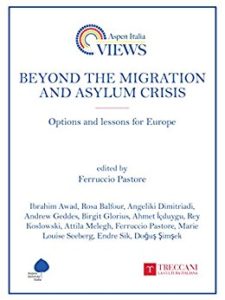
 Inhabited Spaces: Anglo-Saxon Constructions of Place
Inhabited Spaces: Anglo-Saxon Constructions of Place
by Nicole Guenther Discenza
Publisher: University of Toronto Press
Recommended by Hélène B. Ducros
Through the exploration of selected Anglo-Latin and Old English texts, this book unveils conceptions of space and place in medieval England. It skillfully ties early literature with more modern understandings of place-making in human geography and cosmology. While engaging in the ways in which mental and physical places were constructed in times when demons and dragons were part of the creation stories, it draws parallels between past and present encounters with space and place, from the Cosmos to halls and towns. The perceived environments of the early English appear in turn ordered and disordered, familiar and “other,” bounded and infinite, liminal and central, isolated and connected, named and unnamed, ephemeral and permanent, virtuous and sinful, dark and luminous. By surveying regions, nations, built places, wastelands and open waters in medieval writings, the book exposes the meaning of settlements and the relationality of space as marginalized England connects with the Mediterranean sphere. It invites a reflection on what present societies have in common with earlier ones in their attempt to order and control space and place and their quest for an explanation of life.

Far-Right Politics in Europe
by Jean-Yves Camus and Nicolas Lebourg
Publisher: Harvard University Press
Recommended by Louie Dean Valencia-García
The English-language translation of Jean-Yves Camus and Nicolas Lebourg’s Far-Right Politics in Europe could not have come at a more appropriate time with the rise of Golden Dawn in Greece, the National Front in France, and the transnational “Identitaire” movement, amongst others. Aptly, the authors navigate the long history of the European far-right, starting with the Ancien Régime and moving to today. Camus and Lebourg find commonalities between far-right politics but also point to important divergences. They see fascism as not originating in Italy, but part of a series of political conflicts emerging out of liberalism (and rejection of liberalism). While Mussolini was a fascist, the authors describe Hitler as a “radical” fascist. The book describes how the far-right partakes in the “valorization of the ‘we’”—or autophilia—while partaking in “alterophobia”—the fear of the other—through a conflation of “inequalities and differences.” They argue autophilia and alterophobia create “a climate of anxiety, since differences disrupt… efforts to organize… community homogeneously.” One of the more interesting threads found in the book follows the influence of an esoteric, anti-democratic philosopher, Julius Evola, whose ideas are described as located to the right of fascism. Evola more recently has taken the spotlight after being cited by both White House Chief Strategist Steve Bannon and Russian political scientist Aleksandr Dugin, sometimes referred to as “Putin’s Rasputin.” To this end, Far-Right Politics gives important insight to scholars interested in emerging (and converging) Alt-Right movements. The book weaves in and out of the rise, fall, and reemergence of far-right movements across European countries, reminding scholars that, for some, the final chapter of far-right politics has yet to be written.
 Stalin’s World War II Evacuations: Triumph and Troubles in Kirov
Stalin’s World War II Evacuations: Triumph and Troubles in Kirov
by Larry E. Holmes
Publisher: University Press of Kansas
Recommended by Samantha Lomb
This book is part of a new wave of regional histories that offer in-depth and nuanced depictions of Soviet society and daily life in the USSR, based on rich provincial archival sources. Focusing on the Kirov region, some 500 miles northeast of Moscow, this book explores the process and repercussions of wartime evacuation in the face of the German invasion. With this regional focus, the book is able to challenge the typical triumphal narrative found in Soviet history, which declares the evacuation of Soviet industry to be one of the greatest feats of the war. Instead it focuses on the tension and resentment that built in Kirov as the citizens and government there were called upon to provide food, clothing and shelter to people and institutions that descended on the region in numbers far greater than estimated. Tensions emerged not just from the sheer number of evacuees, but also from their demands for privileged treatment in a region already facing severe wartime shortages. Larry Holmes demonstrates how local authorities, without directly challenging the Stalinist system but often working at cross purpose to the central government in Moscow, vigorously advanced their own private and regional interests and exposed preexisting and highly dysfunctional dimensions of Soviet governance at both the center and the periphery. This books is of great interest to scholars of Soviet history. In its depiction of the complexities of the displacement and relocation of populations, Stalin’s World War II Evacuations also has remarkable relevance in our time of mass migrations of refugees from war-torn nations.
 Child Trafficking in the EU: Policing and Protecting Europe’s Most Vulnerable
Child Trafficking in the EU: Policing and Protecting Europe’s Most Vulnerable
by Pete Fussey and Paddy Rawlinson
Publisher: Routledge
Recommended by Daniela Irrera
There is a sensitive and embarrassing phenomenon in Europe, which scholarship still needs to investigate and further analyze. Child trafficking is not new to Western societies. Its increasing development, however, requires more concern and more action. Fussey and Rawlinson provide a comprehensive discussion on the topic, based on empirical data and case study analysis. Their book not only has the merit of calling for more attention towards a phenomenon which has relevant social and political implications for European societies and EU policies, but it also demonstrates that a topic which has been traditionally investigated by sociologists and criminologists may be of interest to political scientists as well.
 Beyond the Migration and Asylum Crisis: Options and Lessons for Europe
Beyond the Migration and Asylum Crisis: Options and Lessons for Europe
edited by Ferruccio Pastore
Publisher: Aspen Institute
Recommended by Mihai Sebe
The 2015 crisis of the refugees and migrants brought to the forefront of academic debate the question of migration and asylum policies. The tragic mistakes done by the European governments, the loss of lives in the Mediterranean migration routes and the images of huge lines of refugees waiting to enter in the European Union have generated an almost perfect political storm in Europe. The deal signed between the EU and Turkey has generated a reduction of the refugee and migrant flux bringing a temporary relief for the Member States governments. Yet the European Union has a structural weakness that hasn’t disappeared. In a volatile political context the migration issues are far from being innocent and may cause serious political disruptions.
This e-book approaches these issues in a well-documented manner. In Part I, it provides a historical approach of the roots of the current crisis, starting with the beginning of the Schengen – Dublin regime. After a careful description of the current imbroglio, the end of Part I makes recommendations on possible strategic changes that can be done. Part II provides a series of answers and recommendations from eleven highly renowned experts from the region who, due to their diverse background, provide new inputs on this complex theme.
Published on March 1, 2017.




